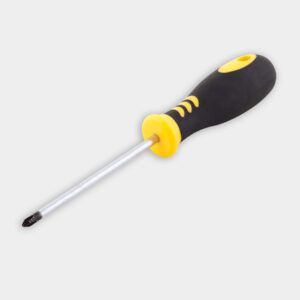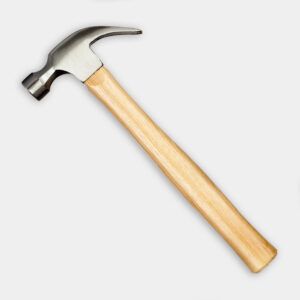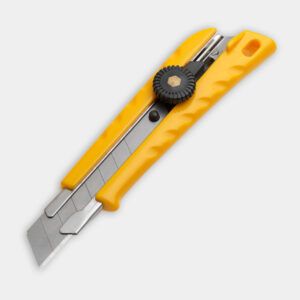Double-hung windows feature two movable sashes that rely on sash cords for smooth and balanced operation. When these cords break or become damaged, the windows can become difficult to open. Our guide below offers tips on how to replace sash cords to help you restore your window’s function.
How Double-Hung Windows Work
Double-hung windows consist of two movable sashes that slide vertically within a window frame. The counterbalance system, which is crucial to the system’s function, includes the following parts:
- Sash cords: These ropes link the window sash to the counterweights, and allow the sash to move up and down.
- Pulleys: Pulleys sit at the top of the window frame, direct the sash cords, and allow smooth movement.
- Weights: You can find weights within the wall cavities on either side of the window. They balance the sash, and make it it easier to open and close.
When a double-hung window’s system functions properly, you can open the window to any position and it will remain in place without additional support. However, if the sash cords break or become frayed, the window will lose its balance and become difficult to operate.
Signs of Damaged Sash Cords
Below are common signs of damaged sash cords:
- Strange noises: Rattling sounds can signal loose or damaged sash cords.
- Uneven or tilted sashes: If the sashes are misaligned or tilted, the sash cords may be worn or broken. This misalignment can damage the window’s seal, and cause drafts and energy loss.
- Visible fraying or breaks in the cords: Frayed or broken cords can make the window difficult to open. Inspect the cords for any signs of damage, and replace them as needed.
- Window is difficult to open or close: This problem indicates that the sash cords are frayed or tangled, which makes the system function less smoothly.
- Window won’t stay open without support: If the window falls or sags when you let go of it, the sash cords may have weakened, which is a product of severe cord wear or breakage.
Tools and Materials To Repair Damaged Window Sash Cords
You’ll need the following tools and materials to repair damaged window sash cords:
- Cotton sash cord
- Hammer
- Screwdriver
- Silicone spray for squeaky pulleys
- Replacement screws
- Utility knife
Window Sash Repair: Step-By-Step Process
Follow the steps below to repair your window sash cords successfully:
Step 1: Remove the Window Sash
- Use a screwdriver to remove the screws that hold the stop beads in place.
- Carefully remove the stop beads.
- Lift the sash out of the window opening.
Step 2: Access the Weight Pockets
- Locate the access panels on either side of the window frame.
- Remove the screws that hold these panels in place.
- Open the panels to reveal the weight pockets.
Step 3: Remove Old Weights and Cords
Carefully remove the old weights from the pockets so that you don’t damage the surrounding wood. Remove any remaining pieces of the old sash cords.
Step 4: Install New Sash Cords
- Feed the new cotton sash cord down through the pulley hole and into the weight pocket.
- Tie one end of the cord securely to the weight.
- Return the weight to the pocket, and make sure the cord moves freely through the pulley.
- Cut the cord, and leave slack that’s about as long as two-thirds the length of the window opening.
- Repeat this process for both sides of the window.
Step 5: Attach Cords to the Sash
- Pull on the cord to lift the weight until it’s close to the top of the jamb.
- Guide the cord along the groove that’s cut into the edge of the sash.
- Tie a knot in the cord where the cord meets the hole in the sash.
- Insert the knot into the hole and secure it with a nail.
- Repeat this process for the other side of the sash.
Step 6: Reinstall the Sash
- Carefully place the sash back into the window opening.
- Replace the stop beads and secure them with screws.
- Make sure the window moves smoothly and stays in place once you’ve opened it.
Sash Window Repair: Troubleshooting Common Issues
Here’s how to handle common issues that may arise after your repair:
- Squeaky pulleys: If you hear squeaking when you open the window, you may need to lubricate the pulleys with a small amount of silicone spray.
- Uneven window operation: If the window doesn’t open evenly, make sure both sash cords are the same length, and that you tied the knots at the same point on each side.
- Window still won’t stay open: If the window still won’t stay open, the weights may be too light. Consider adding more small weights to achieve proper balance.
Window Maintenance Tips
Follow the tips below to keep your repaired windows in good condition:
- Lubricate moving parts annually: Apply a silicone-based lubricant to hinges, locks, and tracks to keep things running smoothly. Avoid using oil-based lubricants, which can attract dust and grime.
- Periodically check the sash cords: Inspect the cords for fraying, and replace any that are especially worn.
- Regularly clean the window tracks and sills: Prevent debris buildup by using a vacuum or a brush to remove dust and dirt. Wipe down the surfaces with a damp cloth to remove lingering residue.
- Repaint or reseal wooden window frames: Check for signs of peeling paint or cracks in the sealant and address them immediately. Use weather-resistant paint and sealants to protect against moisture and extend the frames’ lifespans.
When To Hire A Professional
Repairing window sash cords can be easy enough for a do-it-yourself approach, but some situations might call for professional assistance. If you encounter issues such as a sash that’s painted shut or structural damage around the window frame, you should consult an expert. You should also hire a professional if you’re uncomfortable working with the required tools.
Upgrading Sash Cords to Modern Solutions
Upgrading sash cords to modern solutions can improve your windows’ function and extend their lifespans. Replace traditional cotton sash cords with more durable alternatives such as spring balances or spiral balances. These modern systems last much longer than conventional cord-and-weight systems and reduce necessary maintenance because they feature fewer components. They also make opening and closing a window easier, and you won’t need to use as much strength.
Make sure that the new systems are compatible with your existing window frames. Regularly check and lubricate moving parts to keep your window systems in good condition and prevent future issues.



